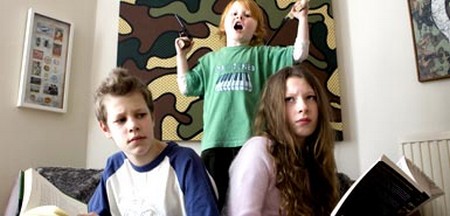Most parents worry about jealousy between their children, and some parents think they can minimize jealousy by having either a very small age gap between siblings or a very large one. This view is supported by psychological research, which has found that an age gap between children
- of seventeen months or less tends to produce less jealousy;
- between two and four years tends to produce a higher level of jealousy;
- of five years or more tends to produce a lower level of jealousy.
You shouldn’t assume, however, that things will automatically work out that way. A large age gap can still result in jealousy because the older child may become too accustomed to being the center of her parents’ attention—and she’ll not easily share her parents with anyone else. A very small age gap can also result in jealousy, because the children are likely to have similar interests and are more likely to compete with each other.
Jealousy between your children, whatever the age gap, can be reduced by the following strategies:
- Encourage siblings to play together, and to share their toys. The more they enjoy each other, the less likely they are to be jealous of each other.
- Give each child a turn to have new items of clothing or toys. Make sure it’s not always your oldest who gets the new item. Let it be the younger one sometimes.
- Don’t tell a child how different she is from her brother or sister. Jealousy will only be increased if one child feels she is constantly being compared with someone else in the family.
- Spend a few minutes every day with each child, just the two of you together. Jealousy will be reduced when you give all of your children some individual attention each day.
A small age gap can be cost-effective. Your biggest financial outlay is with the first child, mainly because of all the equipment necessary for adequate care of a new baby. A second child who closely follows the first-born will be able to use most of these items since they’ll not have been given away to friends—something that often happens when there is a large age gap between the children. And if your second child is the same sex as your first, most of your older child’s baby clothes will still be suitable.
Some couples deliberately plan a large age gap between their children, purely because of economic considerations. These parents believe that raising two children closely together would mean one parent being away from work for perhaps five or six years, which would result in a loss of income over a long period, and possibly even a loss of career. With a large age gap, they reason, one parent would be able to return to work soon after the first child is born, allowing the couple to accumulate savings before they have their second child.
A large age gap has the advantage that each child can enjoy undiluted attention and stimulation from her parents, which is helpful for intellectual development in the preschool years. Practical constraints dictate that in large families with three children under the age of five, the mother and father have only a limited amount of time to play with, talk to, and stimulate each child. However, parents can overcome this problem by making a special effort to ensure that whenever time is available, each child gets individual attention.
When the age gap between the youngest child and the next child in the family is more than five years, the youngest child might have a tendency to be selfish, and to have difficulty mixing with other children. This potential disadvantage of a large age gap can be avoided by ensuring that the youngest child plays with other children of her own age as often as she can, preferably at a playgroup or nursery school. At home the child should be encouraged to share her toys with her friends when they come over to play. This will help offset any detrimental effect of being the “baby of the family.”
“Family spacing” should also take your own feelings into account. Some couples find raising their first child to be so demanding, so time-consuming, that they feel they couldn’t cope with two young children at the same time. It may be far better for a couple to be honest about it—to wait a few years before having their second and subsequent children—than to have more children before they are emotionally ready.
Deciding on the age gap between your children means weighing all these different factors. Remember, age gaps don’t always turn out the way parents plan! In addition, with our modern “recombined” families, added factors of birth order in both families muddy the waters even more.
